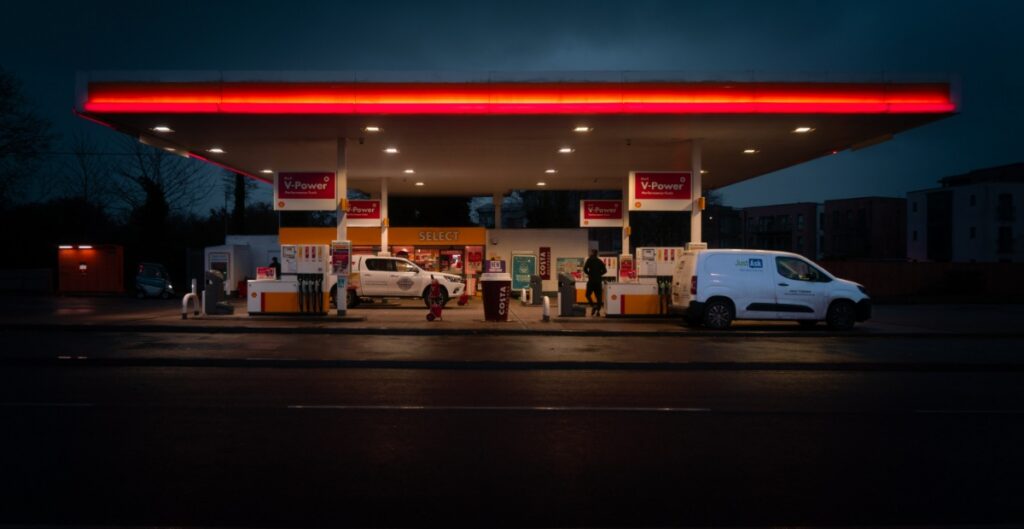Petrol stations are a common sight on our streets, with millions of people across the world relying on them for fuel to power their vehicles. However, with the rise of electric vehicles and the push towards renewable energy sources, many are questioning the energy usage and efficiency of petrol stations. In this article, we will explore how much energy a petrol station uses, the cost implications of this energy consumption, and what steps petrol station owners can take to reduce their energy usage.
How much electricity do UK petrol stations use per month?
According to industry sources, the average petrol station in the United Kingdom uses approximately 15,000 kilowatt hours (kWh) of electricity per month. This figure varies depending upon the size of the station and the number of pumps it has, but we can take an average of 5 kilowatt hours per pump per hour of operation. This means that if a petrol station has 4 pumps and is open for 10 hours a day, it will use around 200 kilowatt hours of electricity per day.
Energy Efficiency in Petrol Stations
But energy consumption is not the only factor to consider – there is also the issue of energy efficiency. Petrol stations need a significant amount of power to pump and distribute gasoline, and this process is often quite inefficient. According to one estimate, it takes around 5 kilowatt hours of electricity to refine a gallon of gasoline. In comparison, an electric vehicle can go 20 miles on 5 kilowatt hours of electricity. This highlights the stark difference in energy efficiency between gasoline-powered vehicles and electric vehicles.
The cost of electricity can also be a significant expense for petrol station owners. Depending upon the location and the energy supplier, the cost of electricity can range from 15 pence to 25 pence per kWh. This means that the average petrol station in the UK can expect to pay between £2,250 and £3,750 per month on electricity bills alone. To put this into context, this is equivalent to the cost of around 1,000 litres of petrol per month.
While the upfront cost of installing renewable energy systems, such as solar or wind power, can be expensive, the long-term benefits can be significant. By generating their own electricity, petrol station owners can reduce their reliance on the grid and lower their electricity bills.
How can petrol station reduce energy usage?
Despite the high energy consumption and cost, there are steps that petrol station owners can take to reduce their energy usage and benefit from the cost savings. One option is to switch to renewable energy sources, such as solar or wind power. While the upfront cost of installing these systems can be expensive, the long-term benefits can be significant. By generating their own electricity, petrol station owners can reduce their reliance on the grid and lower their electricity bills.
Another option is to invest in energy-efficient technology, such as LED lighting and high-efficiency pumps. These systems can significantly reduce energy consumption without impacting the performance of the petrol station. By using smart technology, petrol station owners can also monitor and measure their energy usage, identifying areas where they can improve efficiency and reduce costs.
How will the increase of Electric Vehicles impact Petrol Stations?
The increase of electric vehicles (EVs) is likely to have a significant impact on petrol stations in the UK. As more and more drivers switch to electric vehicles, the demand for petrol will decrease, and petrol stations will need to adapt to stay relevant in the changing market.
In an interview with Elon Musk, the CEO of Tesla, he claimed that if the US were to stop refining gasoline and switch to electric vehicles, it would produce enough electricity to power all the cars in the country. While this claim may be disputed, it highlights the potential benefits of moving towards electric vehicles and renewable energy sources.
One of the most significant impacts of the rise of EVs will be the reduced demand for petrol. As electric vehicles become more prevalent, the need for petrol will decline, and petrol stations may see a drop in sales. However, this does not mean that petrol stations will become obsolete overnight. EVs are still a developing technology, and the infrastructure for electric vehicle charging is not yet as well-developed as that for petrol stations. As a result, many drivers will still need to use petrol stations, at least in the short term, to fill up with petrol or diesel.
To adapt to the changing market, petrol stations may need to offer electric vehicle charging as well as traditional fuel. This will require significant investment in charging infrastructure, but it will also present new revenue streams for petrol station owners. Some petrol stations in the UK are already offering EV charging, and as the number of electric vehicles on the road increases, we can expect to see more petrol stations offering charging services.
How do Petrol Stations make most of their money?
In addition to offering charging services, petrol stations may also need to diversify their offerings to stay relevant. Many petrol stations already offer convenience stores and cafes, but as the demand for petrol decreases, these other services may become more important for attracting customers.
Here are some of the ways petrol stations make most of their money:
- Fuel Sales: The sale of petrol and diesel is the primary source of revenue for petrol stations. They purchase fuel from refineries and wholesalers and then sell it to customers at a markup. The markup can vary depending on factors such as location, competition, and the current price of oil.
- Convenience Stores: Many petrol stations have convenience stores on-site that sell snacks, drinks, and other convenience items. These stores can generate significant revenue, particularly if they are located in areas with high foot traffic.
- Car Washes: Some petrol stations have car washes on-site that generate additional revenue. These car washes can be self-service or full-service, and they can offer a range of services, from basic washes to full detailing.
- Service Bays: Many petrol stations have service bays on-site that offer repairs and maintenance services for vehicles. These service bays can generate significant revenue for petrol stations, particularly if they are well-equipped and staffed by trained technicians.
- ATM Machines: Some petrol stations have ATM machines on-site that generate additional revenue through transaction fees.
- Air and Water Dispensers: Some petrol stations have air and water dispenser




